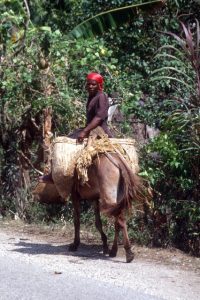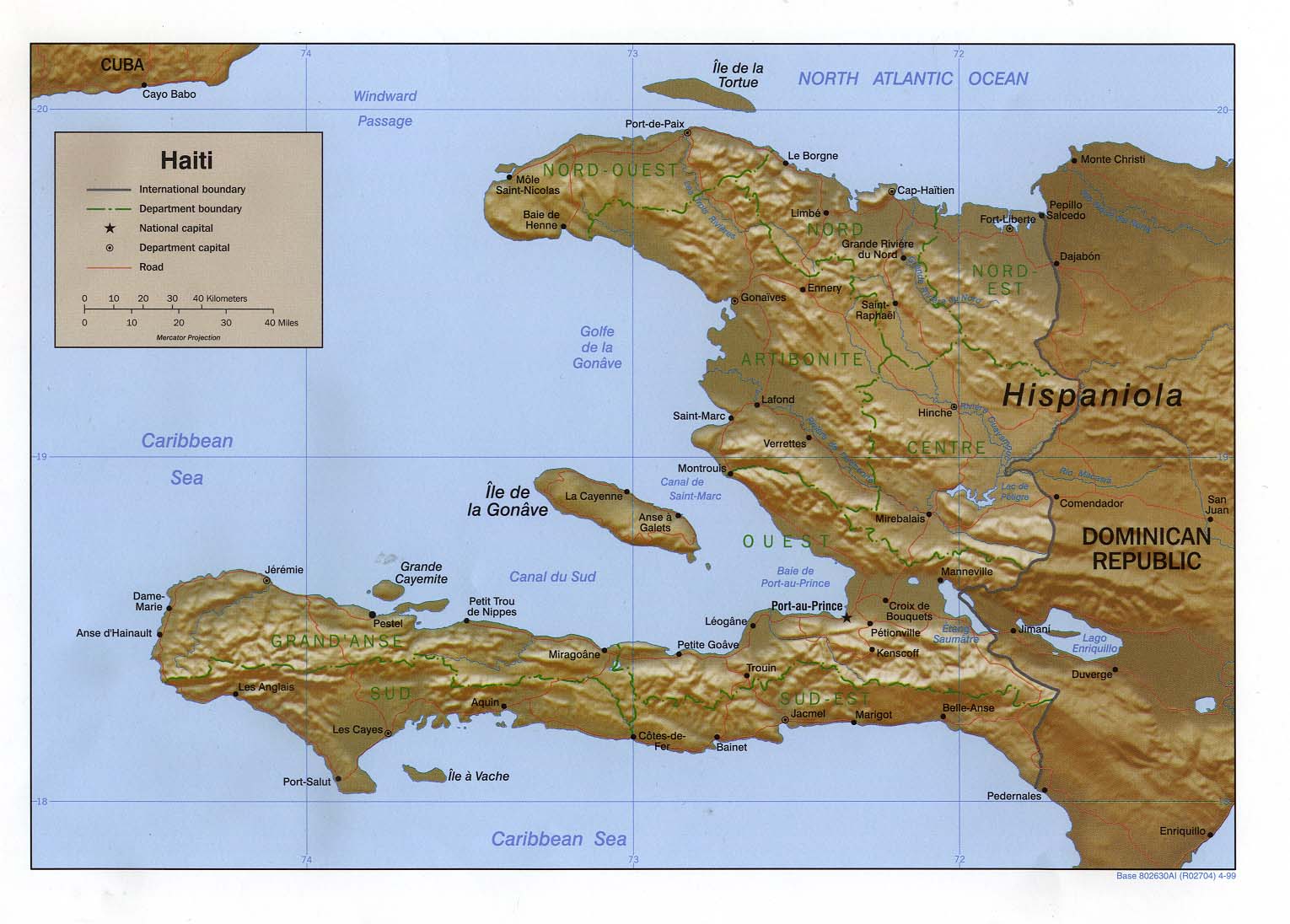Throughout the years of living and traveling abroad I have occasionally written up my experiences, either in short notes for myself, or in the form of letters and emails to friends and family. From my writings during the three years that my wife and I lived in Haiti, and augmented by my, invariably questionable, memory – it was 20 years ago -, I have now distilled a diary in the form of occasional, time-bound entries covering a specific subject, some personal observation, an experience, or a location we visited. The travel experiences vary from the obvious towns, like Port-au-Prince, Jacmel and Cap Haitien, to some of the more unusual places, like the carnival, the Rara bands of Pestel and the suger mills of the Cul-de-Sac, and are whereever possible richly illustrated with photos. The more observational entries, on politics, and on more politics, really, are dominated by text, of course. But Haiti was such a unique place, and my job gave me so many unique opportunities, that it would have been a waste not to record this, even though not all of the content fits in a travel website.
This was the age before widespread digital photography, so the illustrations are from slides, which occasionally have been discoloured before I had the chance to scan them. But many of the pictures, like the woman to the right, are so quintessential Haitian – Haiti before the earthquake of 2010 – that I have to include them, even if their quality is not perfect anymore.
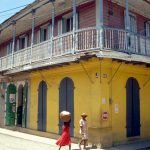 April 2000 – 01. the introduction: How on earth we ended up in Haiti at the beginning of the new Millennium.
April 2000 – 01. the introduction: How on earth we ended up in Haiti at the beginning of the new Millennium.
For somebody who spent all of his working life in the oil business, Haiti – with no fossil fuel resources whatsoever, and a perpetual shortage of the refined stuff – is an unlikely location. Unless, of course, you have resigned from the oil business and opted for another career, which is what I had just done. Early 2000 I arrived in Port-au-Prince, Haiti’s capital, to take up the job of Country Director. No, this is not an alternative for the position of president of the country, it is humanitarian development-speak for the head of an NGO – a non-governmental organisation, a not-for-profit good-doing organisation – in a country where development projects are being carried out.
 May 2000 – 02. the hotel: The first few weeks we stay in a hotel, an excellent introduction to the Haitian approach.
May 2000 – 02. the hotel: The first few weeks we stay in a hotel, an excellent introduction to the Haitian approach.
Since our arrival in Haiti some six weeks ago, we have stayed in the Montana Hotel, whilst searching for more permanent accommodation whenever time permits. The hotel is described as an expensive luxury hotel, but I would rather limit that to expensive. OK, it has a swimming pool, but you will have to find your own towels and your own drinks, service is an alien concept here.
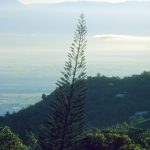 June 2000 – 03. the house: Moving into our house we experience a bit more of the Haitian reality and the Haitian approach to life, but the house is worth it.
June 2000 – 03. the house: Moving into our house we experience a bit more of the Haitian reality and the Haitian approach to life, but the house is worth it.
I finished the previous entry with the observation that our hotel had, most of the time, water and electricity. How different has that been the last couple of weeks! After we moved out, to our own house, we started to get to grips with the realities of Haiti. Only yesterday we finally celebrated that we had, at the same time, electricity, a working water heater, a working inverter – a kind of a battery pack to survive the times without electricity -, a generator – in case you have drained the inverter, which is not at all unthinkable, with only four or five hours town power a day -, fuel for the generator, a working telephone and a television connection. This may sound trivial, but in Haiti it is not.
 September 2000 – 04. Port-au-Prince: Port-au-Prince combines its chaotic downtown centre with the worst of slums like Cite Soleil and charming neighbourhoods full of traditional gingerbread houses. Hate it or love it, it definetly has character.
September 2000 – 04. Port-au-Prince: Port-au-Prince combines its chaotic downtown centre with the worst of slums like Cite Soleil and charming neighbourhoods full of traditional gingerbread houses. Hate it or love it, it definetly has character.
Haiti’s capital city, Port-au-Prince, is quite chaotic. Downtown, at sea level, the streets are laid out in a more or less rectangular grid. Here many of the streets are aligned with local businesses, who operate for a significant part on the pavement, and from the ground floor arcades of the two- or three story buildings. Many street corners are being overtaken by rubbish, which seems to be a permanent element of the town, only rarely being collected – if at all. And it stinks.
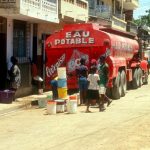 October 2000 – 05. the work: A brief summary on what I am supposed to be doing here
October 2000 – 05. the work: A brief summary on what I am supposed to be doing here
I came to Haiti because I had accepted a job as Country Director for an NGO, a Non-Governmental Organisation – what is otherwise known as a charity. The one that employed me was child-focussed organisation that was largely funded through individual sponsorship: somebody in the rich world paying to support a child in the poor world. This was quite different from what I had been doing before, working for a large oil company, although having said that, the intricacies of management are to a certain extend comparable. Let me start with stating that running a child focussed development organisation is infinitely more complex than running an oil company.
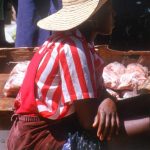 February 2001 – 06. the politics: A short and most personal assessment of Haitian politics at the time, triggered by the inauguration of president Aristide.
February 2001 – 06. the politics: A short and most personal assessment of Haitian politics at the time, triggered by the inauguration of president Aristide.
Haitian politics would be an altogether separate subject for these diaries, and what better occasion to write about it than the installation of the president, Jean Bertrand Aristide. As a true VIP, I was invited to the whole spectacle on February 7th, from blessing in the cathedral to private reception in the palace, then the cultural show in the palace gardens and the ‘dejeuner’. Plenty of discussion beforehand, whether I actually should go or not, given the questionable democratic credentials of this president, or rather, of his political machinery, but in the end we decided that I should go to church (can you imagine?) and then play it by ear.
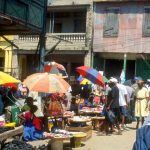 March 2001 – 07. Jacmel: Lovely Jacmel, the pearl of the south, is a bit rundown, but has great atmosphere, its share of historic buildings and a fabulous location on the coast.
March 2001 – 07. Jacmel: Lovely Jacmel, the pearl of the south, is a bit rundown, but has great atmosphere, its share of historic buildings and a fabulous location on the coast.
One of the more attractive, yet easy excursions in Haiti is a trip to the south, which usually starts at Jacmel. A drive to Jacmel from Port-au-Prince takes 2-3 hours, mostly depending on the traffic in Carrefour, a slum neighbourhood that envelops the Route National #2 just to the south of the capital. But once out in the countryside, there is normally little traffic on the generally good tarmac road, except for the occasional horse-drawn cart.
 April 2001 – 08. the carnival: Haiti celebrates carnival, but nowhere they do it so exuberant as in Jacmel, the capital of the South.
April 2001 – 08. the carnival: Haiti celebrates carnival, but nowhere they do it so exuberant as in Jacmel, the capital of the South.
Jacmel is a somewhat sleepy town on the south coast of Haiti. But once a year ‘tout le monde’ comes down, from Port-au-Prince and even further, to celebrate carnival here. There is a parade, groups of people dressed up, slavery is often a big theme, and every year again the large papier-mache masks of world- and Haiti-famous historical figures march through the streets – unashamedly Hitler complete with Nazi salute, Brazilian football star Pele, Haitian liberator Dessaline, Mother Theresa and a whole lot more.
 July 2001 – 09. the crossing: The beautiful mountains above Port-au-Prince allow for a crossing to the south, but not by car.
July 2001 – 09. the crossing: The beautiful mountains above Port-au-Prince allow for a crossing to the south, but not by car.
One of the more adventurous, yet perfectly doable walks in Haiti is the weekend trip from Kenscoff, a mountain village above Port-au-Prince and Petionville, to Marigot on the southern coast, a two-day walk with overnight in a simple hostal in Seguin. The key to success, however, is organisation: somebody will have to drop you off in Kenscoff, and somebody will need to pick you up the next day in Marigot – and preferably drive you back to Port-au-Prince again if you want to complete this within a weekend.
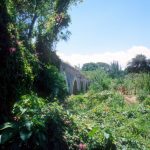 January 2002 – 10. the sugar plantations: One of the more interesting, yet, less explored, things to discover in Haiti are the remains of the sugar mills and plantations around Croix-des-Bouquets.
January 2002 – 10. the sugar plantations: One of the more interesting, yet, less explored, things to discover in Haiti are the remains of the sugar mills and plantations around Croix-des-Bouquets.
Croix-des-Bouquets is a dusty market town just to the north of Port-au-Prince and is the commercial centre of the so-called Cul-de-Sac, a low lying area sandwiched in between mountain ranges that stretched from the sea to the border with the Dominican Republic. What’s in a name. The area provides fertile soil deposited by the Rives Blanche and Gris – so much for originality -, and grows most of the produce for the capital. One of the lesser known attractions of this area are the remnants of the infamous ‘habitats’, the Haitian sugarcane plantations that made the country once the largest sugar producer in the world.
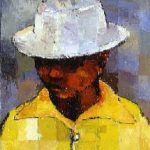 February 2002 – 11. the Haitian arts: Haiti has quite a few unique negatives, but one of its unique positives is its incredibly creative art scene, of which especially the naive paintings are world class.
February 2002 – 11. the Haitian arts: Haiti has quite a few unique negatives, but one of its unique positives is its incredibly creative art scene, of which especially the naive paintings are world class.
Croix-des-Bouquets, centre of the sugar plantations, is also the centre of Haitian metal works, an enterprising art form that relies on the availability of oil drums. Numerous artists cut up the drums and use the metal to create intricate sculptures of birds, suns, people, plants and anything else one can imagine. Many sculptures are circular, and have the conspicuous size of a oil drum cover.
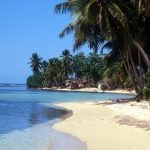 April 2002 – 12. Jeremie: The Southern peninsula of Haiti, the Grande Anse, and its main town Jeremie are not that easy to get to, but the town, and the surrounding beaches, make a trip worthwhile.
April 2002 – 12. Jeremie: The Southern peninsula of Haiti, the Grande Anse, and its main town Jeremie are not that easy to get to, but the town, and the surrounding beaches, make a trip worthwhile.
The Grande Anse, the southern peninsula, is one of the more remote areas in Haiti. It is quite an exercise to get there, from Port-au-Prince, and the last 100 kms takes a good four hours driving. But once we reached Jeremie, the local metropolis, all hardship was forgotten. Jeremie itself is a bit run-down, like every city in Haiti, really, but still full of character. Wooden houses line the streets, some of them actually quite well maintained, newly painted – others less so.
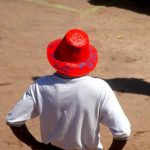 April 2002 – 13. the Fete de la Mer: In the little town of Pestel the local people celebrate the Fete de la Mer, Festival of the Sea, whilst Rara bands cruise the streets.
April 2002 – 13. the Fete de la Mer: In the little town of Pestel the local people celebrate the Fete de la Mer, Festival of the Sea, whilst Rara bands cruise the streets.
On the way to Jeremie we stopped at a small village called Pestel, which had organised a ‘fete de la mer’ in the Easter weekend, complete with boat races, swimming contests (about half of the contestants had to be picked up by the rescue boat half way the harbour) and canoe races (one of the canoes sunk just before the start). Lots of music, especially from the so-called Rara bands, who were competing for the first price in the Rara band contest (the first price was a crate of rum, and three cartons of cigarettes!!).
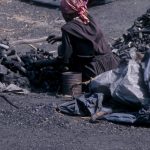 May 2002 – 14. the discontent: Haitian society, even in the best of times not the most stable, starts to crumble under increasingly violent political strive, increasing discontent of increasingly divers groups, and increasingly dodgy savings schemes. My views, only.
May 2002 – 14. the discontent: Haitian society, even in the best of times not the most stable, starts to crumble under increasingly violent political strive, increasing discontent of increasingly divers groups, and increasingly dodgy savings schemes. My views, only.
In October last year I started to bet that Aristide, the Haitian president recently installed for a second time, wouldn’t complete his full, five year term. People in Cite Soleil, the biggest slum in the country and traditionally Aristide’s power base, had started to shout ‘down with Aristide’, and people in the north were also demonstrating against the government. The reason for the disagreements in the north were that the government, under severe American pressure, had started to clamp down on drugs smuggling, probably Haiti’s most profitable business. Because everybody in the north is involved, a clamp down puts people out of work, and therefor without food. If the north stirs, or so Haitian history tells us, be aware!
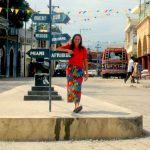 July 2002 – 15. the Worldcup: During the Worldcup football (or soccer, in some parts of the world) Haitians forget all their daily controversies, and unite behind one of the two favourites for the title.
July 2002 – 15. the Worldcup: During the Worldcup football (or soccer, in some parts of the world) Haitians forget all their daily controversies, and unite behind one of the two favourites for the title.
Although I have been in football-crazy countries before, Haiti is a whole different experience. Not having a national football team to speak of, come the Worldcup the country divides in supporting either Brazil or Argentina, the rest does not really count. Interesting, for a country that is normally divided between north and south, between very rich and very poor, between mulatto and black, and invariably between government supporters and opposition.
 September 2002 – 16. Cap-Haitien: Charming Cap-Haitien in the north of Haiti is not only a good basis for visiting the Citadelle and Sans Souci, but also a charming place in its own right.
September 2002 – 16. Cap-Haitien: Charming Cap-Haitien in the north of Haiti is not only a good basis for visiting the Citadelle and Sans Souci, but also a charming place in its own right.
In the North of the country is Haiti’s second largest city, Cap-Haitien, in colonial times known as Cap Francais or the Paris of the Antilles (and also briefly known as Cap Henry, after the self-crowned Roi Christophe, who came to power shortly after Haiti’s independence from France in 1804). Today little reminds of the Paris feeling, although the town does have a certain charm, with its old houses, its tall painted wooden doors, and its balconies, no matter how run-down.
 October 2002 – 17. the beaches: There are several idyllic beaches west of Cap-Haitien, where the waters are also excellent for snorkling.
October 2002 – 17. the beaches: There are several idyllic beaches west of Cap-Haitien, where the waters are also excellent for snorkling.
The most accessible beaches in Haiti are along the Cote des Arcadins, some 60 to 80 km drive north of Port-au-Prince. Here are the likes of Kaliko Beach Resort, Wahoo Bay Beach, and even an ex-Club Mediterranee, a relic from the time Haiti was a popular tourist destination. But the beaches are nothing special, and the drive, easily two hours over a potholed road, is not the most attractive, even before you consider the possibility of being robbed on the way back to Port-au-Prince, if you get back too late and its starts to become dark. There is a beach alternative, in the north of Haiti.
 October 2002 – 18. the concerns: A few more examples, of how Haiti is slowly moving towards the abyss.
October 2002 – 18. the concerns: A few more examples, of how Haiti is slowly moving towards the abyss.
In June the pyramid schemes, sorry, the “co-operatives” did indeed collapse, but unlike Albania a few years earlier, people stayed relatively calm. OK, there were some tyre burnings, the usual expression of discontent, but nothing like a social revolution, massive protests against the government, or taking up arms and march onto the capital. All the more surprising, because the president, after all a relatively intelligent person, had publicly encouraged the masses to invest in the co-operatives to stimulate the economy. Perhaps people still believe the soothing promises of the government that they will compensate those who have lost their shirt.
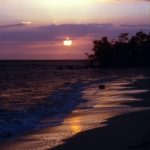 July 2003 – 19. the departure: You either love it, or you hate it in Haiti.
July 2003 – 19. the departure: You either love it, or you hate it in Haiti.
We left Haiti in July 2003, after a little more than three years. Although I paid off my bets – Aristide hadn’t left yet – the president indeed didn’t complete his five year term. He went into exile early 2004, after the celebrations for 200 years of independence turned against him, and the internal discontent as well as international pressure to step back became too strong. Not that it made Haiti a better place.
